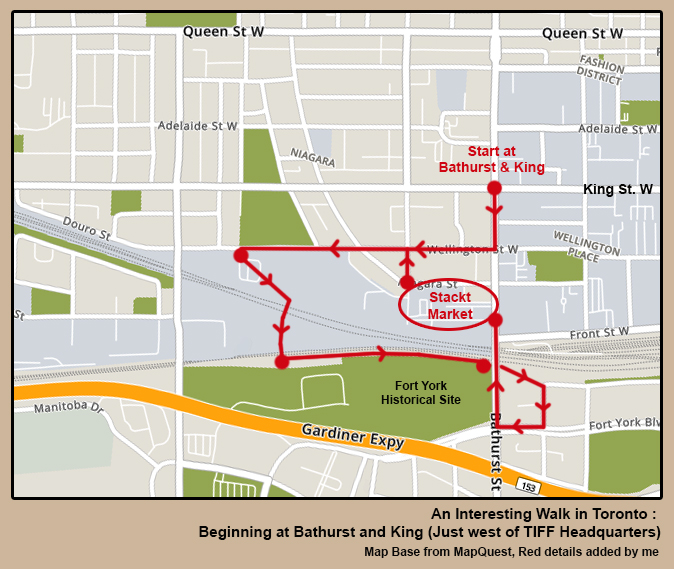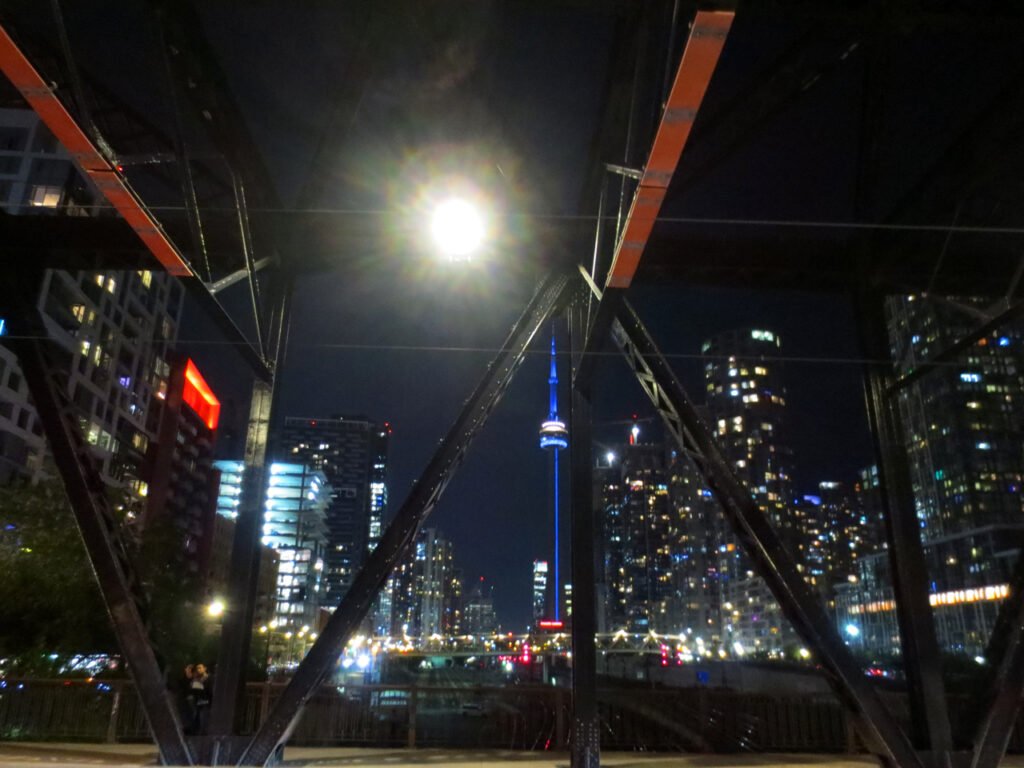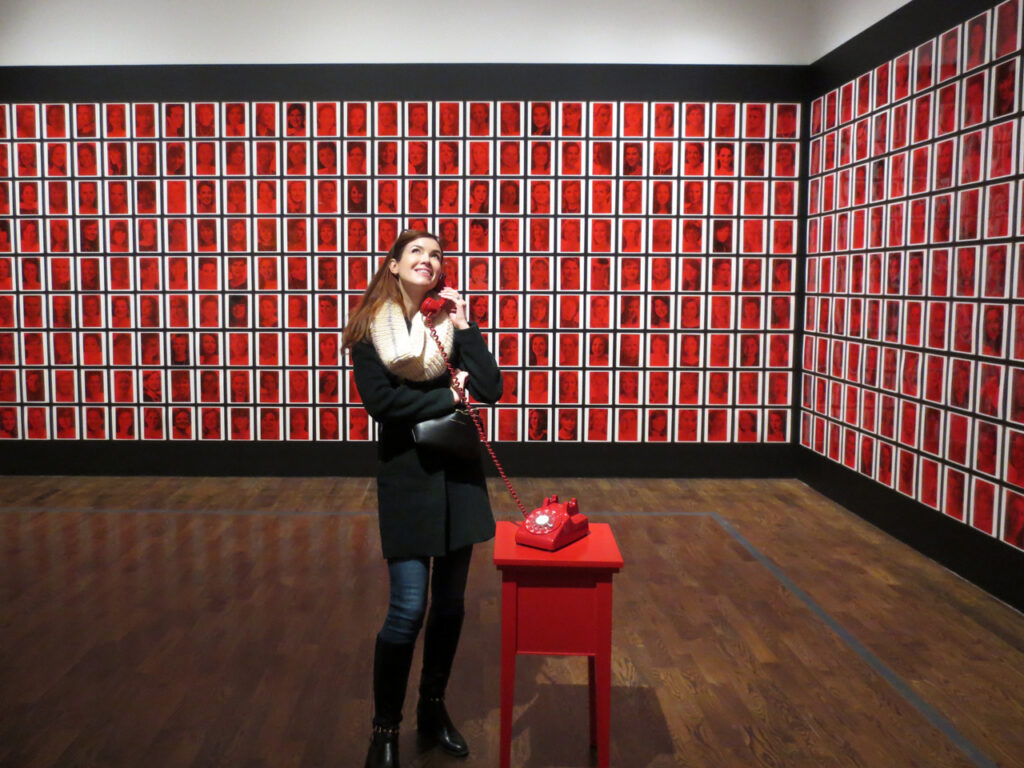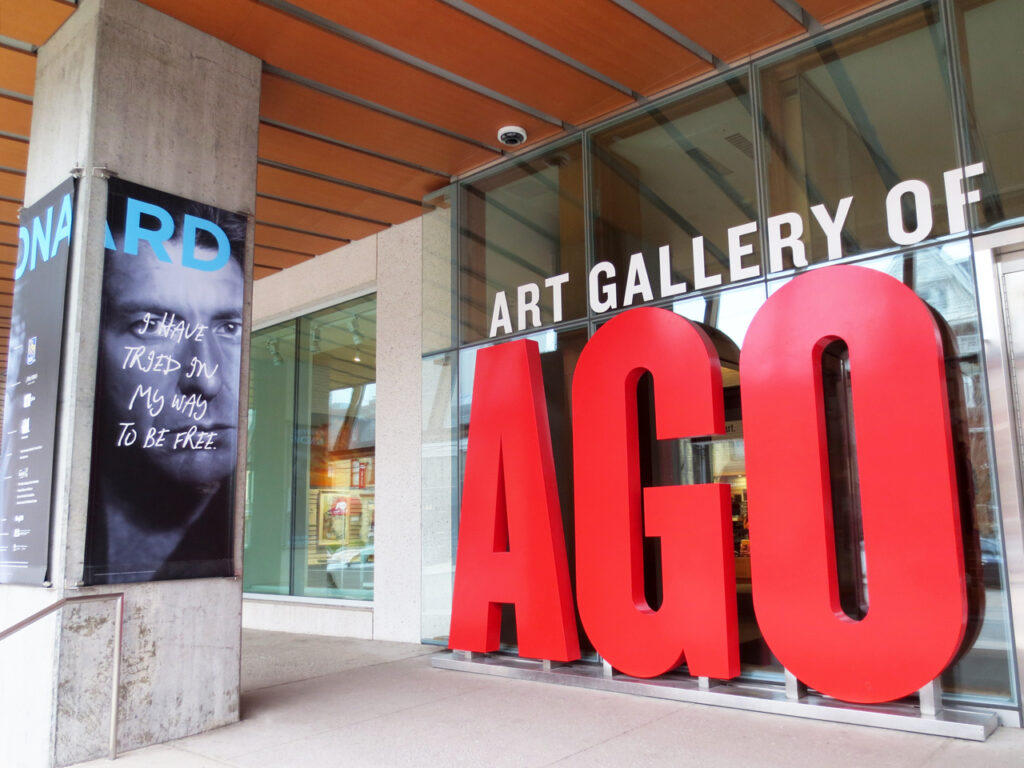My sister and I went to the Canadian National Exhibition together this year and had a great time.
When we were children, going to the Ex was an annual family outing was a highlight of our summers and something we looked forward to. It’s been a good many years since the two of us have been there together, so our visit beheld glimpses down memory lane.
We went in the evening without a specific plan in mind. We looked around, did a little shopping and had something to eat. Then we went on a tour which turned out to be very interesting indeed. (More on that later, when the title of this post will become clear.)
As many probably know, the CNE began 138 years ago, in 1879, as a forum to showcase agriculture and technological innovation. The midway and games came later.
In keeping with the fair’s original purpose, there are still plant growing competitions, and butter and sand sculpting displays …
↑ They’re inside a big refrigerated box with a window on one side. ↑
↑ In case I’ve given the impression that we were almost the only ones there, this is what it looked like in the Convention Centre ↑
Outside …
↑ I had to look up who Cora Beckwith was. Her’s was a travelling vaudeville act where she spent the day immersed in a tank of water, occasionally going under for a couple of minutes at a time. ↑
As for dinner, while special “Only at the Ex” offerings, such as deep-fried cheese curds and chicken feet, spaghetti donuts, and something called a “Double Stack Attack” were available, we stuck to the tried and true — I had a hot-dog with coleslaw and a root beer, and Camille had a corn-dog and poutine. After we picked up our food from a couple of the many outdoor stands, we found a comfortable area with tables and chairs to relax and eat.
We also shared a bag of “must haves” – those tiny donuts, made right there in front of your eyes, tossed in cinnamon and sugar and served hot.
Then we headed over to the extreme eastern side of the grounds …
… ending up beside The Princes’ Gate.
Erected in 1927 to commemorate 60 years of Canadian confederacy, this 300-foot-long, 18-column structure with a 41-foot-high central arch, topped by the Goddess of Winged Victory statue, is still beautiful and still used as a gate to get into the fair. It’s name was decided when it was determined that two princes from Britain would be coming to Toronto for the ribbon cutting ceremony.
The tour we joined was the “CNE Ghost Walk : take a spooky stroll through the CNE grounds and explore some of the haunted history.”
The walk took us to six different spots, where ghosts are said to reside. While some are thought to be the spirits of employees who died during the years the CNE has been in operation, many are from the period before, when these grounds were the site of a deadly battle — the war of 1812 was fought right there, and the fallen were buried where they lay.
The guide was great, telling us all kinds of stories about the ghosts that have been encountered. There’s one with floppy sounding footsteps (a clown?), one who still guards a certain elevator, a couple of soldiers in historic military garb who walk around the grounds, a telephone user who makes calls on a phone that rings and rings but that isn’t even actually plugged in.
In addition to hearing about the ghosts, the tour came with the added bonus of plenty of interesting historical facts about the area.
↑ Beyond is Stanley Barracks, a 177 year old building that was part of the New Fort York, and predates the beginning of the CNE. Apparently a child ghost and her father live there. ↑
↑ In the Horse Palace : The upper floor has been unused for a long time and was usually in complete darkness. It’s been said that a man would regularly take his dog here and throw a ball up the ramp, with the dog running up and bringing it back down. One time the ball went up and the dog followed, disappearing into the dark. Then a yelp was heard and the dog made a mad dash right down the ramp and straight out of the building, without the ball. Moments later it was tossed back down the ramp. Eep! ↑
↑ Toronto has a Mounted Police Unit and their horses stay in part of the Horse Palace. ↑
↑ The Fire Hall that has served the area since 1928. ↑
↑ … and here it is when newly built. The clock had yet to be installed. ↑
↑ Here we are looking for spirits at the site where a trading post once was, Fort Rouillé, established by the French in the mid-1700s, long before Toronto (or York as it was first known) existed. ↑
The final stop of the tour brought us to a place that I’ve wanted to see for ages, but have just never gotten to. That is Scadding Cabin, Toronto’s oldest building still standing. It is at the very top of this “List of oldest buildings and structures in Toronto”.
The reason I’ve never seen it before is that it’s located well off the beaten track, on the south-westernmost edge of the CNE grounds, far beyond all the buildings and rides. I did ask how I’d find it at the information kiosk a few years ago, and got a blank look in response. I guess bright lights and colours trump old cabins, however, personally, I was pretty excited to see this building made of wood that has remarkably withstood 223 Canadian winters.
Scadding Cabin was built in 1794, originally standing east of the Don River, near what is Queen Street East today. It was moved to the CNE grounds as one of the very first exhibits.
It was made by one of the very first British settlers in the area, John Scadding, who was clerk to Upper Canada’s first lieutenant governor John Graves Simcoe, on land given to him by the crown (who acquired it as part of the long-debated Toronto Purchase Agreement).
In 1879, it was felt that the 85 year old structure was worth the effort of moving and preserving, becoming the city’s first historical preservation project. The structure is still cared for and operated by the same group who moved it way back then, The York Pioneers.
The outside of the cabin and the garden, can be seen by anyone, anytime, however, access to the inside is only possible while the CNE is open. It usually closes by 7 pm though, so we, as attendees of the night-time Ghost Tour, were amoung the lucky few to experience the cabin at night, lit by candles as it would have been in the 1700s.
↑ Hey, I got a shot of a ghost!! ;) ↑
The friendly people who spoke to us (Hi Ruth!) stressed how very cold it would have been inside that wooden structure in the winter, which is why the doors were so small and the ceiling so low. This helped preserve the heat coming from the fireplace. Apparently there was a letter found, which says something to the effect that the writer was late with it due to fact that the ink had frozen solid.
The cabin is one small square room, with an attic for storage. They would have slept on the floor. The stairs on the left were a recent addition … originally the attic would have been accessible by a removable ladder.
The furnishings are all very old and historically accurate, however not the ones original to the home. We were told about that baby cradle … it was the bed of the very first British child born in what would become Toronto. His picture is the middle one on the wall there.
Thanks very much for checking out what I’ve been up to.
xo loulou















































